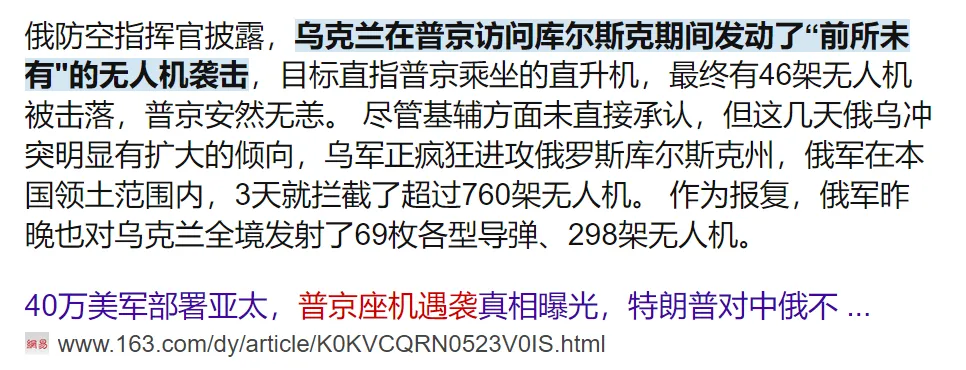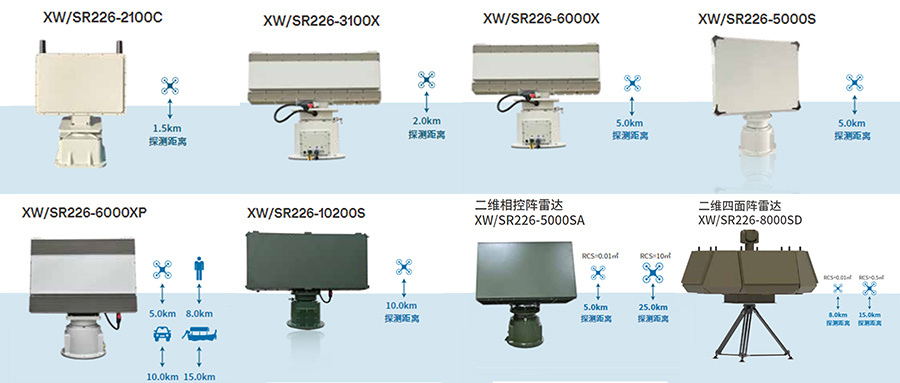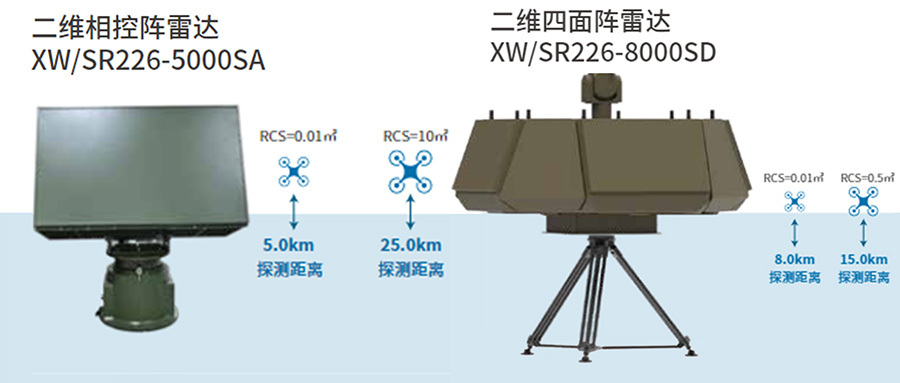The Mission and Exploration of Drone Offense and Defense Behind Putin's Special Operation
Release time:
2025-05-29

On May 25, Russian media reported that the helicopter carrying Russian President Putin was the target of a large-scale Ukrainian drone attack during his visit to Kursk Oblast. Although Russian air defenses successfully intercepted and destroyed 46 incoming drones, ensuring safety, the incident itself served as a wake-up call, once again bringing the asymmetric threat posed by drone technology to the forefront of the international stage.
Drone Threats: From Battlefield to Daily Life
Due to their low cost, high flexibility, and strong concealment, drones have become a "weapon" for terrorist activities and illegal acts. Whether it's the civilian-modified "suicide drones" on the Ukrainian battlefield or the swarm attacks in the Middle East, they have exposed the weaknesses of traditional air defense systems. At the same time, drone technology is profoundly transforming the civilian sector—agricultural plant protection, logistics delivery, film and television aerial photography… the application scenarios are becoming increasingly widespread.

(Image source from the Internet, please contact the editor to delete if there is any infringement)
A report by the China Business Industry Research Institute shows that the market size of China's civilian drone market reached 117.43 billion yuan in 2023, and is expected to exceed 169 billion yuan in 2025. Behind the accessibility of the technology, how to effectively address its potential safety risks has become an urgent issue facing the world.
Countermeasures: Low-Altitude Security Radar Constructs an "Invisible Network"
Faced with the challenge of low-altitude, slow-speed, and small targets ("low, slow, small") drones, traditional air defense systems are often overwhelmed. Radar detection technology, as one of the core components of the anti-drone system, is becoming increasingly important.
The core principle of radar is based on the emission and reflection of electromagnetic waves. The system emits electromagnetic waves of a specific frequency. When the wave beam encounters a target, it will be reflected. By receiving and analyzing these reflected signals, the key information of the target, such as distance, azimuth, altitude, and speed, can be accurately obtained, providing precise guidance for subsequent interception.

In response to the unique challenges of "low, slow, small" drones, Wuhan Leikeda independently developed the XW/SR226 series of low-altitude security radars with completely independent intellectual property rights. This series of products uses advanced DBF technology and can emit multi-beam technology to improve anti-interference ability and detection sensitivity. It can detect, track, and display target trajectories in real time, providing reliable drone alert and target indication for core areas such as borders and airports.

Two star products are particularly eye-catching, Two-dimensional phased array radar XW/SR226-5000SA With its "fast, accurate, intelligent, and stable" technical characteristics, it has become the core equipment for dealing with "low, slow, small" targets, meeting the low-cost, multi-functional, and intelligent security needs of the low-altitude economy.
Two-dimensional four-sided array radar XW/SR226S6D As a revolutionary three-coordinate radar specifically designed for drone detection, it is based on S-band fully digital active phased array technology, integrates AI intelligent processing and an ultra-low-cost modular architecture, and practices the "software-defined radar" concept. Through four-sided array splicing, multi-dimensional target recognition, and dynamic reconstruction of digital beams, it achieves 360° all-sky coverage without blind spots, accurately capturing tiny targets, and is a new generation of intelligent perception center for border monitoring, airport protection, and key area defense.
Widely used in various scenarios, for example:
Low-altitude drone defense: Real-time detection of micro-drones within 8 kilometers (such as DJI Mavic), and linkage with photoelectric systems to achieve a closed-loop "detection-control-strike".
Border and maritime monitoring: All-weather monitoring of low-altitude cross-border targets within 15 kilometers, supporting audio-visual warnings and electronic fence interception.
Airport airspace protection: Covers an airspace of 10 kilometers around the runway, accurately distinguishing between drones and birds.
Urban key area security: Establishes a three-dimensional protection network for sensitive areas such as government buildings and energy facilities, supporting intelligent networking and collaboration of multiple radars.
Mission and Future: Balancing Security and Innovation
The attack on Putin's convoy, and frequent drone security incidents worldwide, have sounded an alarm for the security sector. At the turning point of the explosive growth of drone technology, we must be wary of the shadow of "drone terrorism," but we cannot stifle innovation.
The key lies in embracing technological change with an open attitude and strengthening the research and development and application of core countermeasures technologies. Domestic low-altitude security radar technology, represented by Leikeda, is constantly breaking through and innovating, striving to provide a solid and reliable "invisible shield" for maintaining national security, social stability, and the development of the low-altitude economy. As drones increasingly become assistants in our lives, strong low-altitude perception and defense capabilities are the key to our confidently navigating the future.









